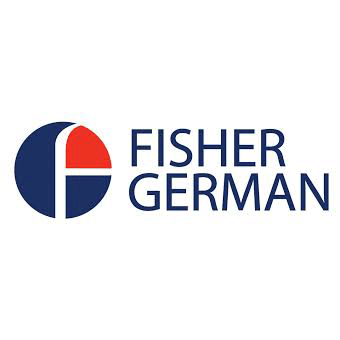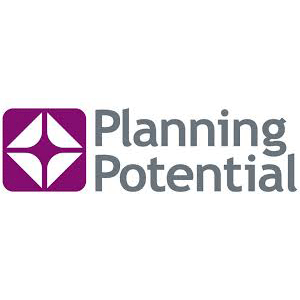Contact us to get a free quote
Your planning application will benefit from a robust drainage system which is fully compliant with the national and local drainage guidance
Our experience in dealing with local drainage authorities, lead local flood authorities and planning departments put us in a great position to give you the best advice to get the planning application approved.
Our expertise allows us to give you the full range of services for drainage strategies including 2D surface water run-off modelling, approved drainage calculations using Micro Drainage and design of Sustainable Drainage Systems in complex site conditions such as:
Sites within floodplains and affected by surface water flooding
Contaminate land
Sloping and very flat sites
Sites with potential unsuitable subsoil and deep backfills
Sites with high groundwater levels
Using our latest mapping, allow us to clearly examine the ground conditions at a desktop level and provide you with a robust design.
We work collaboratively with planners, landscape architects, architects to develop a design that meets the requirement of the developer and the local authority. We create developments that are more resilient to climate change.
You receive clear and specific advice which:
Meets the local and national planning policies
Uses common sense to produce a resilient sustainable drainage design
Enables you to make informed changes to the design and achieve planning
It is costs effective while making your development more sustainable
Contact us today on 01608 510121 or get a free quote
Trusted by over 100 developers, architects and planners in the UK to get their planning approvals
Our Reports
If you are uncertain about your requirements, give us a call, we are happy to talk you through the options.
Contact us today on 01608 510121 or get a free quote
The benefits of using our flood risk assessments for your planning application
You receive the first report in 48hrs
If you need soakaway tests, we will organise quotes for you or explain how to undertake them
You will obtain a robust design for surface water drainage
We use cost effective Sustainable drainage systems
Fixed price for all our drainage strategies
We support you through the planning application until a decision is made
Our Drainage Reports Content
Our design process is based on our experience of offering simple drainage solutions for complex sites. Our drainage reports include the following:
Assessment of available geological records or site investigation if available
Scope soakaway test and analyse results
Obtain and review sewer plans
Evaluate potential use of SuDS drainage applicable to site
Determine climate change allowances
Undertake basic hydraulic modelling of surface water
Calculate storage volumes to comply with SuDS drainage guidance
Indicate discharge points and rates for surface water
Indicate applicable SuDS and storage volume distribution
Provide a drainage strategy drawing showing the location of SuDS drainage
During this process, we create Sustainable Drainage Systems –SuDS- strategy that focus on delivering projects which reduce water quantity, enhance water quality, allow space for water amenity, and provides biodiversity.
Our proactive approach allows the developers, landscape designers and architects to fully understand the benefits of using Sustainable Drainage Systems in their developments.
Contact us today on 01608 510121 or get a free quote
Frequently Asked Questions
When is a drainage strategy report required?
A surface water drainage strategy report for planning is required for:
All major planning applications. A major application is a development bigger that 10 houses or the site is greater than 1 hectare or an extension in floor space greater than 1000m2
Any size development that can exacerbate existing drainage problems
Minor developments located in areas at risk of river or surface water flooding
Any size development where there is an increase of impermeable areas or the local drainage authority deemed to be necessary
A drainage consultant carries out the surface water drainage strategy in compliance with the local site condition and guidance by the Lead Local Flood Authority.
Who approves the sustainable drainage strategy report?
A drainage strategy is approved by the Lead Local Flood Authorities (LLFA’s). The LLFA is most likely to be the County Council where the development is located. In the near future, the may be a SuDS approving body (SAB) in England.
Why do I get a drainage planning condition after providing a drainage strategy?
The drainage is conditioned because the development can change between planning approval and construction.
It can also be conditioned if soakaway tests were not undertaken or discharge rates were not agreed with the Environment Agency or the local water company. The condition looks like this.
You can re-submit the same drainage strategy used at planning stage to clear the planning conditions and produce the detailed design for construction. This is assuming that there were not changes to the development.
Contact us today on 01608 510121 or get a free quote
Do I need to complete soakaway tests for my SuDS strategy?
It depends on the known soil characteristics and the flood risk.
In areas where the lead local flood authority is knowledgeable of the ground conditions, there is no need to carry out soakaway tests.
In councils where flooding is considered an issue or the ground conditions are unknown, the Lead Local Flood Authority or Local Council would request the following information:
Soakaway test to demonstrate if the infiltration is possible
Agree the discharge rate with the local water company
Provide written approval of discharge to watercourses
Show full set of calculations and all the levels of manholes
How to do a soakaway test or percolation test for SuDS?
There are two types of percolation tests.
The first one is the percolation test to BRE365.
The soakaway tests can be undertaken by a site investigation company or your local builder or farmer or you can undertake them.
We will provide you with:
Detailed instructions to undertake the soakaway tests
A drawing showing their location and depths
Calculate the infiltration rates once you give us the site results
The second method is a deep borehole test, in which a hole is drilled into the ground and the discharge rate is calculated.
This method is used in areas where the permeable layers are underneath impermeable soils. For instance, clay overlaying chalk.
This type of soakaway test is undertaken by a site investigation company that has the equipment. If required, we can obtain quotes and organise this work.
What is a SuDS report or Drainage Report?
A SuDS report or Drainage Report is a document that sets out the drainage principles for the safe and sustainable disposal of surface water produced by a development. These reports are also called Drainage Strategies. The drainage strategy form part of the construction drainage design.
SuDS report or Drainage Report or Drainage Strategy contains the following items:
The current site description including size, permeable and impermeable areas, flood risk and whether is a green or brownfield site
An investigation of the possible discharge points such as infiltration, rivers, surface water sewer or combined sewer systems
A full set of calculations for discharge rates of the existing site
A drainage strategy drawing showing the location of the SuDS drainage
An evaluation of the Sustainable Drainage Systems -SuDS- that can be used on the site
The size of the sustainable drainage system based on drainage calculations
The maintenance plan for each of the sustainable drainage elements
A drainage report could also include the foul water drainage design strategy
What is a Sustainable Drainage System SuDS?
A SuDS is a surface water management approach that mimics the natural environment while providing resilience to climate change.
The aim is to revert the development site to their original water cycle state. It is achieve by reducing water quantity, enhancing water quality, allowing space for water amenity and providing biodiversity for your development.
In order to achieve this, the storm peaks are reduced by slowing down and diverting water away from sewers and into the ground. This is accomplished by using green roofs, permeable surfaces, soakaways, ponds and swales. These systems can be used for amenity spaces and for biodiversity.
In some cases is not possible to infiltrate all the water, then water is attenuated in a pond and discharged to a watercourse at the same flow rate than when the site was a green field.
When watercourses are not available, water can be discharge to a sewer and attenuated in tanks. This is the least sustainable approach to managing surface water.
This drainage strategy hierarchy is followed by Building regulations and the National Planning Policy.
How do sustainable urban drainage systems work?
Sustainable urban drainage systems work by making water closer to people and creating streetscapes for people and communities can interact.
The SuDS in urban environments also work by achieving the principles of controlling water volumes, reducing temperatures of surfaces, and making stable urban environments that a more resilient to drought and flooding.
These principles are achieved by introducing places where water interaction is possible by building green walls, rainwater gardens, street water gardens, reflective ponds, water playscapes, plant drills. Great examples of these works can be seen in the Bristol Harbour and in the Netherlands.
Bristol Harbour - Sustainabe
Kop Zuidas -Netherlands - Construction of water-retardant green strip. © Merlin Michon
What does Building Regulations say about Sustainable drainage?
Sustainable drainage design is the preferred option for dealing with rainwater within Building Regulations. Building regulations follows this Drainage strategy hierarchy in order of priority:
Soakaway or other infiltration device for instance swales, ponds or basins
Discharged to a watercourse if that is not reasonably practicable
Discharge to a sewer
Is the drainage Strategy the same as Detailed Drainage Design?
The drainage strategy is an outline design or stage 3 RIBA drainage design.
The drainage strategy gives the key elements of design such as type and size of Suds, minimum road build-ups etc. These designs would be fined tuned during detail design.
The detailed drainage design includes construction drawings or Stage 5 RIBA.
The detailed design contains all pipe sizes, pipe beddings, distribution chambers, setting out points for swales and 3D models for ponds.
In some special cases, the local council may request that all the levels, sizes and design up to stage RIBA 4 are determined before approval is given.
This can happen in areas of high flood risk or areas which are located in special zones such as source protection zones or in the proximity to Sites of Special Scientific Interest, Special Areas of Conservation, Special Protection Areas and Ramsar wetland sites.
What is a foul sewer strategy?
A foul sewer strategy determines:
The connectivity of the foul water drainage design within the development
The discharge point and the discharge rate.
The sewer capacity assessment
An agreement on the discharge rate.
If a house is not connected to the sewer system, our foul drawing strategy will determine the size of the treatment plant and the drainage field. We will also scope the relevant site investigation to determine the infiltration rate.
A foul sewer strategy can be provided as part of the Surface Water Drainage Strategy if requested by the Lead Local Flood Authority.
How to undertake a percolation test for a treatment plant?
The percolation test should follow the requirements given in the BS6297.
The video below shows how to undertake the tests.
The soakaway tests can be undertaken by a site investigation company or your local builder or farmer can undertake them.
We will provide you with:
Detailed instructions to undertake the percolation tests
Provide a drawing showing their location and depths
Calculate the Vp percolation rates based on your results
Get in touch with us
Call Arge on 01608 510 121 or e-mail him at arge@rida-reports.co.uk
BEng(Hons) MSC CEng MICE MCIWEM C.WEM CEnv





















House extension upto 250 square metre
Office/light industrial extension, general industrial and retail under 250 square metre